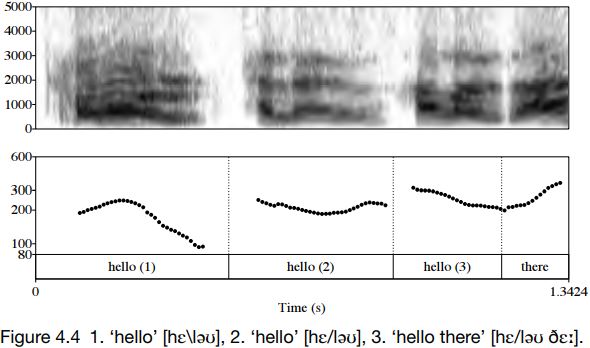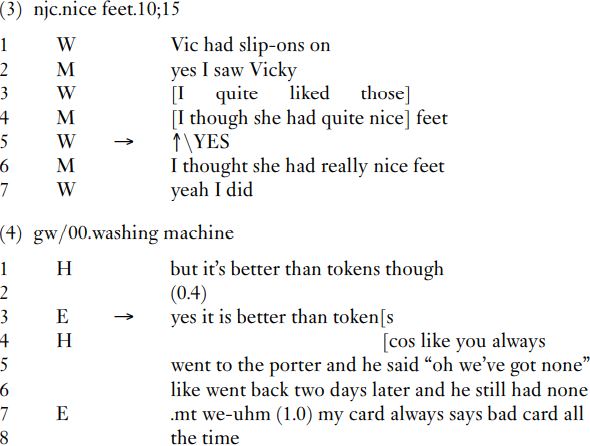

Grammar


Tenses


Present

Present Simple

Present Continuous

Present Perfect

Present Perfect Continuous


Past

Past Simple

Past Continuous

Past Perfect

Past Perfect Continuous


Future

Future Simple

Future Continuous

Future Perfect

Future Perfect Continuous


Parts Of Speech


Nouns

Countable and uncountable nouns

Verbal nouns

Singular and Plural nouns

Proper nouns

Nouns gender

Nouns definition

Concrete nouns

Abstract nouns

Common nouns

Collective nouns

Definition Of Nouns

Animate and Inanimate nouns

Nouns


Verbs

Stative and dynamic verbs

Finite and nonfinite verbs

To be verbs

Transitive and intransitive verbs

Auxiliary verbs

Modal verbs

Regular and irregular verbs

Action verbs

Verbs


Adverbs

Relative adverbs

Interrogative adverbs

Adverbs of time

Adverbs of place

Adverbs of reason

Adverbs of quantity

Adverbs of manner

Adverbs of frequency

Adverbs of affirmation

Adverbs


Adjectives

Quantitative adjective

Proper adjective

Possessive adjective

Numeral adjective

Interrogative adjective

Distributive adjective

Descriptive adjective

Demonstrative adjective


Pronouns

Subject pronoun

Relative pronoun

Reflexive pronoun

Reciprocal pronoun

Possessive pronoun

Personal pronoun

Interrogative pronoun

Indefinite pronoun

Emphatic pronoun

Distributive pronoun

Demonstrative pronoun

Pronouns


Pre Position


Preposition by function

Time preposition

Reason preposition

Possession preposition

Place preposition

Phrases preposition

Origin preposition

Measure preposition

Direction preposition

Contrast preposition

Agent preposition


Preposition by construction

Simple preposition

Phrase preposition

Double preposition

Compound preposition

prepositions


Conjunctions

Subordinating conjunction

Correlative conjunction

Coordinating conjunction

Conjunctive adverbs

conjunctions


Interjections

Express calling interjection

Phrases

Sentences


Grammar Rules

Passive and Active

Preference

Requests and offers

wishes

Be used to

Some and any

Could have done

Describing people

Giving advices

Possession

Comparative and superlative

Giving Reason

Making Suggestions

Apologizing

Forming questions

Since and for

Directions

Obligation

Adverbials

invitation

Articles

Imaginary condition

Zero conditional

First conditional

Second conditional

Third conditional

Reported speech

Demonstratives

Determiners


Linguistics

Phonetics

Phonology

Linguistics fields

Syntax

Morphology

Semantics

pragmatics

History

Writing

Grammar

Phonetics and Phonology

Semiotics


Reading Comprehension

Elementary

Intermediate

Advanced


Teaching Methods

Teaching Strategies

Assessment
Phrasing and intonation
المؤلف:
Richard Ogden
المصدر:
An Introduction to English Phonetics
الجزء والصفحة:
46-4
15-6-2022
1181
Phrasing and intonation
All languages use changes in pitch to handle some aspect of meaning. In English, changes in pitch are associated with sentence- or utterance-level meanings and not e.g. word meanings. Intonation is the linguistic use of particular f0 contours in the production of speech. These contours can be described using labels that refer to their shapes such as ‘fall’ ([]), ‘rise’ ([/]), ‘fall–rise’ ([/]), ‘rise–fall’ ([/]), ‘level’ [`], sometimes accompanied by a reference to where in the speaker’s overall range the contour is: ‘a high fall’, ‘a fall to low’, ‘a low rise’.
In English utterances, the main stressed item of an utterance carries an intonation contour. This means that pitch movement starts on the stressed item and carries on over any subsequent syllables. Other stressbearing syllables may, but need not, carry an intonation contour. The placement of contours in English depends on the context.
Figure 4.4 shows f0 traces for three utterances: ‘hello’ [hεləυ], ‘hello’ [hεləυ] and ‘hello there’ [hεləυ ðε:]. The difference between the falling and rising contours should be visible enough. (It is safe to ignore the smaller movements of f0 on the unstressed syllables: they are not auditorily prominent in the way that movements on stressed syllables are.) In ‘hello (3)’, the f0 contour is the same as in ‘hello (2)’, but it is distributed over more material.

Here are two speakers assessing a third person:

Our focus of interest is line 2, ‘she is nice’. In the first line, K assesses another person as ‘really nice’, and invites J to agree with her (‘isn’t she’). J responds by repeating K’s words: ‘she is nice’. In English, when words are repeated, it is normal for the stress to shift to a different word from the first time round: the ‘nice’ in line 2 is ‘deaccented’. The main stresses in the utterances are marked with underlining.
Now let us imagine different intonation contours here. With a falling intonation contour (‘she is nice’), the pitch would be high on ‘is’, and fall to low at the end of ‘nice’. Most English speakers would say that line 2 produced this way expresses straightforward agreement. If the contour is different, then the meaning is different. If line 2 had a fall followed by a rise (‘she /is nice’), where the pitch is high on ‘is’, but then falls and is low at the start of ‘nice’, rising up again at the end of ‘nice’, then most English speakers would say that the next word is likely to be ‘but’. A fall–rise intonation contour in this context usually says: there is an upcoming disagreement.
In fact, this is how the conversation actually went:

In lines 3–4, J qualifies her agreement that the other person is ‘nice’. This illustrates that in English intonation handles utterance-level meanings: the fall vs. fall–rise contours here mark different types of agreement.
Here are two examples of the word ‘yes’, both located after an assessment. They differ in intonation, loudness, pitch range, and in their location relative to the previous turn at talk; and they also differ in the meanings they convey.

In (3), Marion and Wendy are discussing a character from a soap opera. Marion says she thought she had ‘quite nice feet’, and Wendy agrees with her. She does her agreement in line 5 almost immediately after Marion has assessed Vicky’s feet. She does her agreement loud (represented with capital letters here) and with quite high pitch (represented by [↑]).
The second case, ‘washing machine’, also has a ‘yes’, in line 3. In this fragment, Elizabeth and Helen are discussing the system used to pay for the launderette at college, which has changed from tokens to a smart card. Helen says the new system is ‘better than tokens though’. Elizabeth agrees with this, but her agreement comes late (almost half a second later). Agreeing late weakens the sense of agreement; notice that Helen comes in and explains her assessment of the new system as ‘better’, and the next thing Elizabeth does is to find a reason why the new system is not very good (lines 7–8). So the ‘yes’ here is not whole-hearted, especially in comparison with the ‘yes’ of the first example. Perhaps unsurprisingly, the strength of agreement is audible too: the ‘yes’ in line 3 of the ‘washing machine’ extract is quiet, low pitched, and slow – a direct contrast with the ‘yes’ in line 5 of the ‘nice feet’ extract.
Here, then, we have two instances where ‘yes’ is produced, but the intonation, along with other things, affects the ‘meaning’ of the ‘yes’, making it stronger and more affirmative, or weaker and prefacing a disagreement.
Phrasing and intonation give speakers clues about the syntax that organizes words into structures. This is one of the main interfaces between phonetics and syntax and semantics. Talk is chunked up into phrases, whose boundaries reflect major syntactic boundaries. The symbols [| ||] mark minor and major intonational phrase boundaries. Phrases have some or all of the following characteristics (roughly):
• At the start: speeding up, re-setting of pitch
• At the end: slowing down, quieter, near the bottom or top of the speaker’s pitch range
• A pause before or after
• Congruence with syntactic or pragmatic boundaries
Take the following sentence:
(5) We didn’t go to the museum because it was raining.
Did we go or not? If the sentence is spoken on a monotone, it is not possible to tell. But if an intonation contour is placed on the sentence, then two different meanings are possible:

In the first one, there is one phrase and the last word has a falling + rising intonation contour on it. It means: we did go to the museum, but for some other reason than the fact that it was raining. In the second one, there are two phrases, with a slowing down at the end of ‘museum’, and two falling contours, one on ‘didn’t’, the other on ‘raining’. This means: we did not go to the museum and the reason is that it was raining.
 الاكثر قراءة في Phonetics
الاكثر قراءة في Phonetics
 اخر الاخبار
اخر الاخبار
اخبار العتبة العباسية المقدسة

الآخبار الصحية















 قسم الشؤون الفكرية يصدر كتاباً يوثق تاريخ السدانة في العتبة العباسية المقدسة
قسم الشؤون الفكرية يصدر كتاباً يوثق تاريخ السدانة في العتبة العباسية المقدسة "المهمة".. إصدار قصصي يوثّق القصص الفائزة في مسابقة فتوى الدفاع المقدسة للقصة القصيرة
"المهمة".. إصدار قصصي يوثّق القصص الفائزة في مسابقة فتوى الدفاع المقدسة للقصة القصيرة (نوافذ).. إصدار أدبي يوثق القصص الفائزة في مسابقة الإمام العسكري (عليه السلام)
(نوافذ).. إصدار أدبي يوثق القصص الفائزة في مسابقة الإمام العسكري (عليه السلام)


















